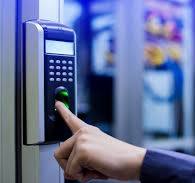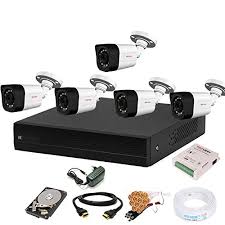Biometric Access: Enhancing Security with Cutting-Edge Technology
In today’s fast-paced world, security is a top priority for individuals and organizations alike. Traditional methods of access control, such as keys or access cards, are no longer sufficient to protect sensitive areas and information. This is where biometric access control comes into play, offering a more secure and reliable solution for controlling entry to restricted areas.
Biometric access control utilizes unique physical characteristics of individuals, such as fingerprints, facial features, iris patterns, or voice recognition, to verify their identity. These biometric identifiers are nearly impossible to replicate or steal, making them an ideal choice for enhancing security measures.
One of the key advantages of biometric access control is its accuracy. Unlike passwords or PIN codes that can be forgotten or shared, biometric data is inherently tied to an individual and cannot be easily compromised. This ensures that only authorized personnel can gain access to secure areas, reducing the risk of unauthorized entry.
Another benefit of biometric access control is its convenience. Users no longer need to carry keys or access cards; their unique biological traits serve as their credentials. This not only streamlines the entry process but also eliminates the need for frequent updates or replacements of traditional access devices.
Furthermore, biometric access control systems can be seamlessly integrated with other security measures, such as surveillance cameras or alarm systems. This comprehensive approach enhances overall security by creating a layered defense system that deters potential threats and provides real-time monitoring of access points.
From government facilities and financial institutions to corporate offices and residential buildings, biometric access control is becoming increasingly popular across various sectors. Its versatility and adaptability make it suitable for a wide range of applications where stringent security measures are required.
In conclusion, biometric access control offers a sophisticated yet user-friendly solution for enhancing security in today’s dynamic environment. By leveraging cutting-edge technology and unique biological traits, organizations can effectively safeguard their assets and personnel against potential risks.
Top 9 Advantages of Biometric Access: Security, Accuracy, and Beyond
- Enhanced security
- Accuracy
- Convenience
- Reliability
- Efficiency
- Integration capabilities
- Cost-effective
- Scalability
- User-friendly
Challenges of Biometric Access: Privacy, Costs, Vulnerabilities, and More
- 1. Privacy Concerns
- 2. Costly Implementation
- 3. System Vulnerabilities
- 4. Lack of Standardization
- 5. User Acceptance Challenges
- 6. Maintenance Requirements
Enhanced security
Biometric access offers an unparalleled level of security by leveraging unique biological traits for authentication. Unlike traditional access methods like keys or passwords, biometric identifiers such as fingerprints or facial features are inherently tied to an individual and nearly impossible to replicate. This ensures that only authorized personnel can gain entry to secure areas, significantly reducing the risk of unauthorized access or breaches. With biometric access control, organizations can enhance their security measures and protect sensitive information with a robust and reliable authentication system based on individuals’ distinct biological characteristics.
Accuracy
Biometric access control systems offer a significant advantage in terms of accuracy due to the difficulty in forging or replicating biometric identifiers. Unlike traditional access methods like passwords or access cards, biometric data such as fingerprints, facial features, or iris patterns are unique to each individual and nearly impossible to counterfeit. This inherent security feature ensures precise and reliable identification of individuals, minimizing the risk of unauthorized access and enhancing overall security measures within various environments.
Convenience
Biometric access control offers the significant advantage of convenience to users by eliminating the need to remember passwords or carry access cards. With biometric identifiers such as fingerprints or facial recognition, individuals can effortlessly gain entry to secure areas without the hassle of managing traditional access credentials. This streamlined process not only saves time but also reduces the risk of unauthorized access, making biometric access a user-friendly and efficient solution for enhancing security measures.
Reliability
The reliability of biometric access lies in the fact that biometric data is uniquely linked to an individual and cannot be easily lost or stolen. Unlike traditional access methods such as keys or access cards, which can be misplaced or duplicated, biometric identifiers like fingerprints or facial features are inherent to each person and remain constant throughout their lifetime. This inherent tie between the individual and their biometric data ensures a high level of security and accuracy in verifying identity, making biometric access a dependable and trustworthy solution for controlling entry to restricted areas.
Efficiency
Efficiency is a key advantage of biometric access control systems as they streamline access control processes by eliminating the need for manual verification methods. With biometric technology, individuals can quickly and seamlessly gain entry to secured areas without the hassle of presenting keys, access cards, or remembering passwords. This not only saves time but also reduces the likelihood of human errors in the verification process. By automating the identification and authentication process through biometric data, organizations can enhance operational efficiency and ensure smooth access control procedures for their personnel and visitors.
Integration capabilities
Biometric access systems offer the significant advantage of integration capabilities, allowing them to be seamlessly combined with other security measures to create a comprehensive security solution. By integrating biometric access systems with surveillance cameras, alarm systems, and monitoring software, organizations can establish a layered defense strategy that enhances overall security effectiveness. This integration not only strengthens access control but also enables real-time monitoring and incident response, providing a more robust and proactive approach to security management.
Cost-effective
By implementing biometric access control systems, organizations can enjoy the cost-effective advantage of reducing expenses related to replacing lost keys or access cards. Unlike traditional methods that require frequent replacements due to loss or theft, biometric identifiers are unique to each individual and cannot be easily misplaced or duplicated. This not only saves money on reissuing credentials but also minimizes the risk of unauthorized entry, enhancing overall security measures while optimizing operational costs.
Scalability
Biometric access control systems offer the advantage of scalability, making them a versatile solution for a wide range of businesses. Whether it’s a small startup or a large corporation, biometric access systems can be tailored to meet specific needs and requirements. This scalability ensures that businesses can easily expand or modify their security infrastructure as they grow, without the need for extensive reconfiguration or additional hardware. By offering flexibility and adaptability, biometric access control systems provide a cost-effective and efficient security solution for businesses of all sizes.
User-friendly
Biometric access control systems offer a user-friendly experience by providing quick and easy authentication methods. Users no longer have to remember complex passwords or carry access cards; their unique biological traits serve as the key to unlock secure areas. This streamlined approach not only simplifies the entry process but also enhances convenience for individuals accessing the premises. With biometric authentication, users can swiftly verify their identity with a simple scan, ensuring a seamless and efficient access control system that prioritizes user comfort and ease of use.
1. Privacy Concerns
Privacy Concerns: One significant con of biometric access is the potential privacy implications associated with the collection and storage of biometric data. Individuals may express concerns about their unique physical characteristics, such as fingerprints or facial features, being captured and utilized for identification purposes. The fear of unauthorized access to this sensitive information or its misuse by third parties can lead to apprehension among users regarding the security and confidentiality of their personal data. Addressing these privacy concerns is crucial in ensuring that biometric access systems are implemented in a transparent and ethical manner that respects individuals’ rights to data protection and privacy.
2. Costly Implementation
Costly Implementation: The initial setup and installation of biometric access control systems can be expensive, especially for large-scale deployments across multiple entry points. The investment required for purchasing biometric devices, software integration, training personnel, and ensuring compatibility with existing infrastructure can pose a significant financial burden for organizations. Additionally, ongoing maintenance and support costs must also be considered, adding to the overall expense of implementing biometric access control systems. This cost factor may deter some businesses from fully adopting biometric technology despite its security benefits, highlighting a key drawback of this advanced security solution.
3. System Vulnerabilities
System Vulnerabilities: Despite their advanced security features, biometric systems are not immune to hacking or spoofing attempts, which can compromise the integrity of the technology. Hackers may exploit vulnerabilities in the system to gain unauthorized access by replicating biometric data or using sophisticated techniques to deceive the authentication process. This inherent risk of system vulnerabilities poses a significant challenge for organizations relying on biometric access control, as it opens the door to potential security breaches and compromises sensitive information if adequate safeguards are not in place.
4. Lack of Standardization
The lack of standardization in biometric technology poses a significant challenge in the implementation of biometric access systems. With varying standards across different biometric modalities, such as fingerprints, facial recognition, or iris scans, interoperability issues can arise when integrating multiple types of biometric access systems. This lack of uniform standards not only complicates the integration process but also hinders the seamless operation and compatibility of various biometric technologies. As a result, organizations may face difficulties in achieving a cohesive and efficient biometric access control system that meets their security requirements effectively.
5. User Acceptance Challenges
User Acceptance Challenges can pose a significant con of biometric access control systems. Some individuals may feel uncomfortable or hesitant about enrolling their biometric data due to concerns about privacy and security. The process of capturing and storing biometric information can be perceived as intrusive or inconvenient, leading to resistance towards adopting biometric access control measures. This lack of user acceptance can hinder the successful implementation of biometric systems, as it is essential for individuals to trust and feel comfortable with the technology in order for it to be effective in enhancing security measures.
6. Maintenance Requirements
Maintenance Requirements: One significant drawback of biometric access systems is the need for regular maintenance and calibration to maintain accurate readings. This upkeep adds to the overall operational costs and complexity of managing the system. Regular maintenance schedules are essential to ensure that biometric devices function correctly and provide reliable identification. Failure to conduct timely maintenance can result in decreased accuracy, leading to potential security breaches or access issues. The need for ongoing calibration and upkeep can be a logistical challenge for organizations, requiring dedicated resources and expertise to ensure the continued effectiveness of biometric access systems.



